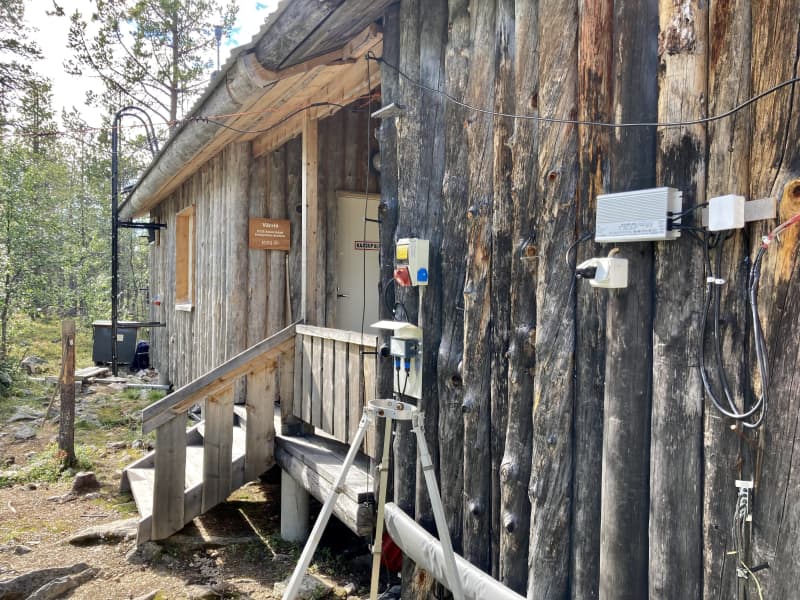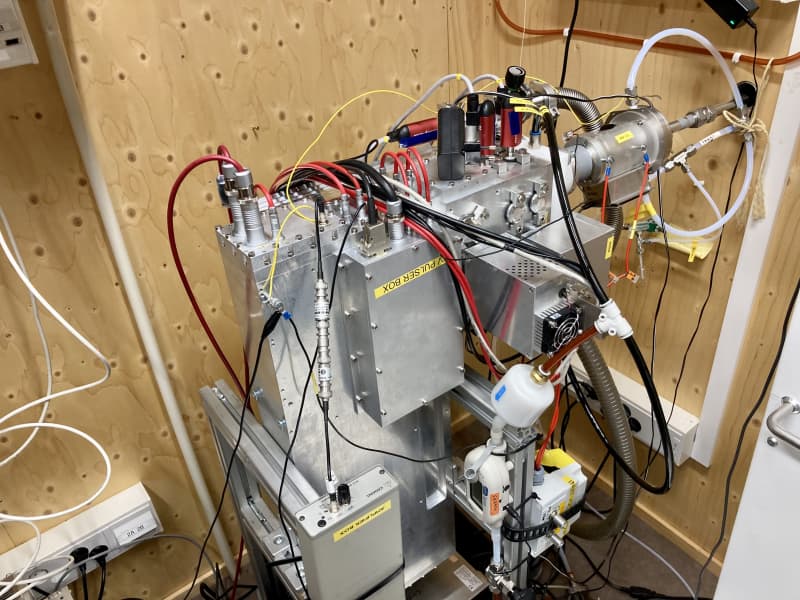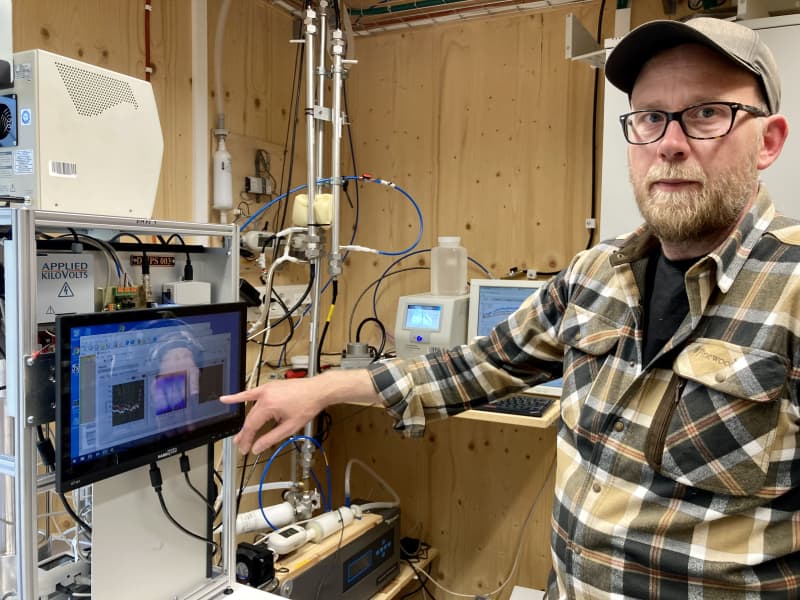Fine particles play an important role in the fight against climate change, as they have a cooling effect on the climate. Global warming due to greenhouse gases will accelerate if the amount of fine particles decreases.
Small aerosol particles surround us everywhere. At the Värriö research station in eastern Lapland, in the heart of the nature reserve, pioneering work is being done on fine particle research.
Particulate matter is an important part of climate change, as it cools the climate and plays a crucial role in climate change. The Värriö research station is investigating the mechanisms of fine particle formation in the Arctic and Antarctic regions.
Eastern Lapland is a favourable place to study the atmosphere because the surrounding air is very clean. Anthropogenic emissions from Montsegorsk on the Russian side sometimes enter the Värriö area. Heavy industry and large metal smelters are located near the border.
– Air pollution such as sulfur oxide, nitrogen oxide and small particles come from there in very high concentrations with the east wind.
In Värriö, small particles in clean air are studied, but also the effect of human activity, such as heavy industry, on the concentration of small particles, the cloudiness of the area and thus the climate of the area.
Particulate matter cools the climate in contrast to greenhouse gases
The effect of small particles on the climate is undeniable, but more information is needed. Small particles are made up of various compounds, very small molecules.
The molecules begin to gather together and form into small particles in a drop of water. Clouds consist of small water droplets that are created when water condenses on the surfaces of small particles.
– They make clouds last longer and increase the extent of the cloud cover. The clouds, on the other hand, interact with the sun’s radiation and the earth’s thermal radiation. That’s how they affect temperatures and climate, explains particle research pioneer Sipilä.
There are two types of fine particles
Fine particles can be divided into two different types, natural and man-made particles. Nature constantly produces small particles, which are formed from the compounds of forests, seaweed and soil vegetation.
– Even sea breams become small salt particles. They are also formed by, for example, the activity of volcanoes and the dust of the Sahara. They are natural sources of small particles, says Mikko Sipilä.
Man-made small particles consist of, among other things, sulfur dioxide, which comes from traffic, factories and other man-made emissions. They also have a cooling effect in the atmosphere, but on the other hand, for example, sulfur dioxide turns into harmful sulfuric acid in the atmosphere. Air pollution causes health problems for people all over the world.
The exception is so-called black carbon, i.e. soot, the small particles of which cause global warming.
Climate change is generally affected by two operating mechanisms. These include man-made greenhouse gases, such as carbon dioxide and methane, and fine particles. Greenhouse gases have a warming effect on the earth, and small particles have the opposite effect. Their combined effect can be seen on Earth as climate change.
– The end result is that the climate is warming. Due to possible small particle emissions and air quality improvement measures, the cooling effect may weaken. That, in turn, may accelerate the warming.

State-of-the-art equipment at the SMEAR station in Värriö
The state-of-the-art research unit SMEAR is located near the main building of Värriö, less than a kilometer away at the top of Kotovaara. There are 6-7 similar stations in the world, four of which are in Finland.
In the yard of the SMEAR station, there are various structures, such as sensors, poles and tall metal towers. There are cables on the ground.
In the middle of the wooded yard area is a small, modest-looking two-part wilderness cabin built of wood. An incredible sight opens up inside. The room has several different terminals and research equipment that can be used to analyze small particles and their composition.
It is almost impossible for a layman to understand the accuracy with which the equipment can make observations.
The measurement results of the SMEAR research station are analyzed on site in Värriö or read remotely at the Center for Atmospheric Sciences of the University of Helsinki.
One of the measuring devices is partly designed by the station director of the research station, atmospheric scientist Mikko Sipilä. Nowadays, it is familiarly known among researchers as Kärsä. With it, it is possible to separate and name extremely small concentrations of different compounds in the air.
– Its accuracy is the same as distinguishing human footprints on the Earth, Sipilä describes the efficiency of the device.

The trimmer helps air safety
Kärsä has been further developed in Finland at Karsa Oy and it is believed to be useful in the future in areas other than small particle research. The aviation security industry is interested in its use at airports and cargo inspections.
– The extremely sensitive device can detect gaseous chemicals that can be among the cargo of airplanes, says Sipilä.
Director of the Värriö research station, Mikko Sipilä, points out that the purpose of the measuring device was originally to separate the molecules that are the precursors of small particles, and it is still used for that. Its use and benefit for other purposes is a positive thing, but a byproduct.
– In terms of flight safety, the device still requires EU approval and it could take 1-2 years, says Mikko Sipilä, director of Värriö’s research station.
Atmospheric research by Finnish researchers is world-class. The University of Helsinki’s Department of Atmospheric Sciences’ research results have been published in various prestigious scientific publications

